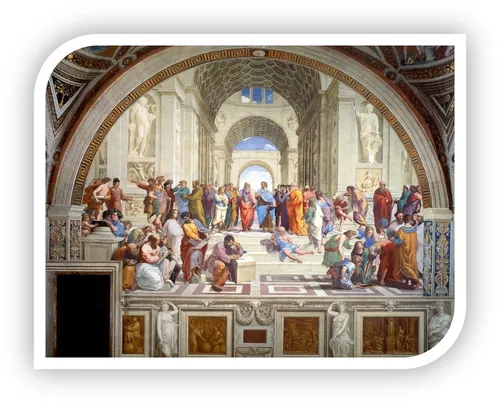What are the Key audiences for Classics and Why? by Alex Marsh
Key audiences are hard to define for any subject or media, but even more so we have this challenge with the study and the impact of classics.
 By identifying ‘key audiences’ we can help to show why classics is important to each group for many different reasons. The term itself, as with most things in the engagement sector, is overly broad as individuals may cross multiple bubbles of what we consider to be key. For example say we have secondary school level students, many of those students may be low income, POC or LGBTQ+. All of which are key audiences in trying to tackle the longstanding prejudice and privilege that surrounds the study of classics.
By identifying ‘key audiences’ we can help to show why classics is important to each group for many different reasons. The term itself, as with most things in the engagement sector, is overly broad as individuals may cross multiple bubbles of what we consider to be key. For example say we have secondary school level students, many of those students may be low income, POC or LGBTQ+. All of which are key audiences in trying to tackle the longstanding prejudice and privilege that surrounds the study of classics.
This links in with another ambiguous public engagement term – segmenting publics (NCCPE - Who are the public?) In essence this outlines how and why we break up the ‘general public’ to engage them with the material. A study conducted by Institute of Classical Studies (ICS) defines “‘public engagement’ as any activity which is intended to share your academic research with non-specialist audiences.’” (Public Engagement with Classics Research in the UK: A Survey). But what makes up a non-specialist audience, is it simply everyone who isn’t a classicist? In which it would surely be a challenge to try and engage the billions of non-classicist out there in the exact same way. Therefore we need to at least attempt to think about what the key audiences are and how/why we engage with them.
How do we define a ‘key audience’?
A key audience depends on the reason for engagement, is it to increase the study classics? Or do we want to display it’s relevancy?
As for studying; there are students of different ages and levels of study, teachers and also parents. Each is important in their own way, the students must be engaged in the topic to even want to look at classics let alone study it, the next step is teachers since even if children are interested in classics if they need the opportunity to develop this interest into a study.
Lastly parents, while this might seem more irrelevant as they won’t be the ones learning about classics and they won’t be teaching it so why should we not only define them as a key audience but also put effort into getting them involved? Often, especially for first generation university attendees in the family, the parents are the hardest to convince since the idea of university over a practical trade and skill may seem useless to life. Therefore by showing the parents that classics can be useful in many ways to daily life and the future of their children they will encourage this studying rather than putting their kids off.
The other challenge comes from targeting specific audiences in order to try and increase the currently narrow field when it comes to diversity. Naturally, due to negative stigma created by the likes of Boris Johnson among many other white upper-class public male figures classics gets a currently justifiable reputation of being for the stuffy and privileged. Therefore it is important in defining ‘key audiences’ to outline groups who have been historically underrepresented and underappreciated in the field.
Say for example the movement to and engage more women with classics. What had previously been a male-dominated course is now beginning to balance out due to targeted engagement conducted by project such as The Athena Swan project, dedicated to encouraging and supporting women in Higher Education (Advanced HE – Athena Swan Charter). The tables below show the progress being made in this movement towards equallity.

Table 1: REF Qualities Data 2015-2016 breaking down staff by gender (CUCD – Equality and Diversity in Classics Report November 2020).

Table 2: CUCD 2018-2019 Breaking down staff by gender (CUCD – Equality and Diversity in Classics Report November 2020).
Through projects such as this and also a heavier focus on studying the women of the ancient world, classics has become a much safer and more open space for women to excel and study. While this does not mean that there is complete equality when it comes to women holding more advanced positions in classics (see tables above) there is definitely an improvement achieved by identifying women as a key audience and taking steps to make them feel included and relevant to the subject.
In conclusion
A key audience doesn’t need to be this far-removed engagement term used only by university marketing. There are key audiences in classics to increase the amount of courses run and engaged with: students, teachers and parents. However there is also the more social change motivated audiences to increase diversity and therefore make the study of classics a more open, honest and valuable course and career. PG needs a bit of work just for a clearer and punchier ending?
Useful Links
NCCP ‘Who are the Public’ From: https://www.publicengagement.ac.uk/about-engagement/who-are-public.
Public Engagement with Classics Research in the UK (Council of University Classical Departments Bulletin 48 (2019)) From: https://cucd.blogs.sas.ac.uk/files/2019/10/BRIDGES-Public-Engagement-in-Classics-Survey.pdf.
CUCD ‘Equality and Diversity in Classics Report November 2020’ From: https://cucd.blogs.sas.ac.uk/files/2020/11/CUCD-Equality-and-Diversity-Report-2020.pdf.
Advance HE ‘Athena Swan Charter’ From: https://www.advance-he.ac.uk/equality-charters/athena-swan-charter.
Raphael’s ‘British School of Athens’, Vatican Museum From: https://www.rawpixel.com/image/3848194/illustration-image-art-people.
